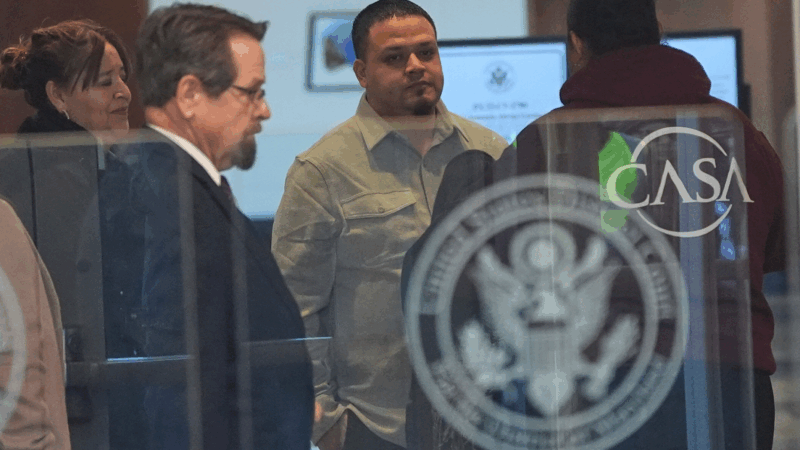Remembering the Stand in the Schoolhouse Door
Some images from the civil rights era are indelibly etched on our collective memory. For instance, the rubble left by the bombing of the 16th St. Baptist Church or the dogs and fire hoses set upon marching children in downtown Birmingham. Tuesday marks the 50th anniversary of a third — Governor George Wallace’s stand in the Schoolhouse door.
George Wallace’s stand was not a spontaneous event. Wallace carefully choreographed the scene to keep a campaign promise to his political base, a promise to defy federal desegregation orders. After years of delay and many federal court orders, the Kennedy administration was determined that black students Vivian Malone and James Hood would attend the university. And they let Wallace know they were serious.
“Attorney General Robert Kennedy himself visited Gov. Wallace in Montgomery on April 15.”
Culpepper Clark is a former dean at the University of Georgia. He’s author of The Schoolhouse Door; Segregation’s Last Stand at the University of Alabama. Clark says the Kennedy Administration wanted to avoid a repeat of the riot that killed two people at Ole Miss when that school was integrated the year before. When Robert Kennedy reached out to Wallace, he was taken aback by the Governor’s response.
“When Dynamite Bob Chambliss and accomplices bombed the 16th St. Baptist Church, Wallace went out and apologized not for anything but blamed it on the African American Community itself.”
The stand in the schoolhouse door helped propel Wallace to run for president 4 times. During a Maryland campaign stop on May 1972, Arthur Bremer shot the governor. That assassination attempt left Wallace to spend the rest of his life in a wheel chair.
The Effect of the Stand
It was Wallace’s success at attracting white working class voters that changed America’s political landscape.
“I think Wallace’s lasting legacy is the polarization that has made Alabama to this day not only the most conservative of American states but also most racially polarized.”
Wayne Flynt is a former history professor at Auburn University and is the author of Alabama: The History of a Southern State.
“In the 2008 presidential election between Obama and John McCain Alabama had the most divided populace of any state in the United States. 98% of African Americans voted for Barack Obama and more than 90% of whites voted for John McCain.”
Culpepper Clark believes the most consequential effect of Wallace’s stand was the shift in American political power.
And he carved out of the Democratic Party what would become known as Wallace Democrats. These Wallace Democrats would eventually become the Reagan Democrats of the Reagan revolution of the 1980s. Thus there’s a direct line between the drama that was taking place, the political theater. But behind it was a whole political sea change and the Democratic Party would lose its base for a long time to come.”
George Wallace’s stand didn’t stop Vivian Malone. She graduated from the University in 1965. James Hood left the university in ‘63 but went on to earn graduate degrees from Michigan State and Cambridge University. By 1966, there were 400 black students attending classes on the 3 campuses of the University of the Alabama System. For WBHM, I’m Greg Bass.
~Greg Bass, June 11, 2013
Judge to hold hearing on whether Kilmar Abrego Garcia is being vindictively prosecuted
A federal judge this week canceled the trial of Kilmar Abrego Garcia, and scheduled a hearing on whether the prosecution is being vindictive in pursuing a human smuggling case against him.
Thailand and Cambodia sign new ceasefire agreement to end border fighting
In addition to ending fighting, the agreement calls for no further military movements by either side and no violations of either side's airspace for military purposes.
Top Instagram reels from Goats and Soda in 2025: Plumpy’Nut, aid cuts, soccer grannies
Our most-viewed Instagram videos include reports from a Rhode Island factory that makes special food for malnourished children and from a tournament for soccer-playing "grannies."
Should the U.S. model its vaccine policy on Denmark’s? Experts say we’re nothing alike
The Trump administration wants to revamp U.S. childhood vaccination recommendations to align with some other peer nations, including one tiny country in northern Europe.
Marijuana rescheduling would bring some immediate changes, but others will take time
President Trump set the process in motion to ease federal restrictions on marijuana. But his order doesn't automatically revoke laws targeting marijuana, which remains illegal to transport over state lines.
Amanda Seyfried’s tally for 2025: 3 starring roles, 2 Golden Globe nominations
Amanda Seyfried is up for a Golden Globe for her performance in The Testament of Ann Lee, a movie musical about the leader of the Shakers, the 18th-century religious movement that preached celibacy, gender and racial equality, and pacifism.







